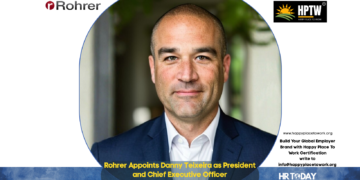For over a decade, industry experts and HR professionals have debated the widening gap between academic curricula and corporate expectations. The discussion has been particularly relevant to MBA education, which is intended to produce future business leaders but often falls short of industry demands. Over the last two years, I have visited multiple Tier 1 and Tier 2 MBA colleges, and my findings reaffirm what HR professionals have been discussing for years: the gap between academia and industry has widened significantly.
Despite being a well-recognized issue, this divergence continues to grow. The underlying reason is that the objectives of academia and industry are fundamentally different. Educational institutions are primarily focused on imparting theoretical knowledge, while organizations seek professionals who can adapt quickly and contribute effectively from day one. The real challenge is not about merging these objectives but about ensuring they complement each other, producing graduates who are prepared for the evolving demands of the corporate world.
A significant distinction must be made between a regular MBA program and other business education formats. I firmly believe that an MBA should be a two-year residential program where students engage in immersive learning experiences. A structured residential setup fosters collective participation, peer learning, and leadership development, which are essential for professional growth.
To transform MBA students from Version 1.0 (entry-level students) to Version 3.0 (corporate-ready professionals), a multi-layered strategy is needed. The MBA journey should evolve across three levels:
Version 1.0: The initial stage where students enter with academic knowledge but limited exposure to real-world business complexities.
Version 2.0: A developmental phase involving research, projects, industry internships, networking, and certifications.
Version 3.0: The final stage where students cultivate a unique blend of skills, mindset, and character what I would like to call the X-Factor to navigate the corporate jungle.
According to a GMAC report, of the 15 million individuals aged 20-34 holding a graduate management education masters degree worldwide, 2.34 million (15.6%) are Indians, making India the second-largest pool of MBA graduates globally. However, despite this large talent pool, the employability of MBA graduates remains a critical concern. While MBA employability in India has risen from 47% in 2021 to 71% in 2024, the job market is increasingly favoring candidates with specialized skills. The number of monthly active job openings requiring an MBA at entry and mid-junior levels dropped by 55% in 2023, indicating a growing preference for domain expertise over general management skills.
This article explores how HR professionals can play a pivotal role in steering academia towards producing future-ready graduates. It also examines the importance of single specialization over dual specialization, the need for faculty development, the emerging industries that require specialized talent, and how certain Tier 3 PGDM colleges are operating more like placement agencies rather than academic institutions.
1. The Expanding Gap Between Academia and Industry
1.1 Why the Gap Exists
Despite the significant investment in management education, many MBA graduates still lack the essential skills required for corporate success. The reasons for this gap include:
– Outdated Curriculum: Many MBA programs still teach models and theories that were relevant decades ago but have little application in today’s fast-changing business environment.
– Limited Industry Exposure: Many colleges do not provide students with real-world business challenges, restricting their ability to apply theoretical knowledge.
– Skill Mismatch: Employers often find that graduates lack skills like critical thinking, problem-solving, leadership, and digital literacy.
– Transactional Approach to Education: Many Tier 3 PGDM colleges prioritise placements over holistic learning, which prevents students from developing a long-term business mindset.
1.2 Role of HR in Closing the Gap
HR professionals must collaborate with academia in curriculum design, faculty training, and student mentoring. Some ways HR can contribute include:
– Industry-Academia Partnerships: Involving HR leaders in course development to ensure alignment with current business needs.
– Internships & Live Projects: Offering students hands-on experience through corporate internships, consulting assignments, and case studies.
– Soft Skills & Leadership Training: Introducing programs focused on communication, leadership, and emotional intelligence.
– Tech-Driven Learning: Encouraging the integration of AI, data analytics, and digital marketing into business education.
2. Emerging Industries in India: Opportunities for MBA Graduates
Over the past five years, several niche industries have expanded in India, creating new employment opportunities. Business schools must align their programs with these emerging sectors to ensure relevance.
2.1 Fast Fashion Retail
– Brands like Shein have re-entered India, partnering with Reliance Retail.
– The Indian fashion industry is projected to reach $115 billion by 2027.
2.2 Private Space Sector
– Companies like Skyroot Aerospace and Agnikul Cosmos are leading India’s private space revolution.
– Government reforms have opened new opportunities for private investments in space technology.
2.3 Renewable Energy
– India’s renewable energy sector is one of the fastest-growing globally, with an installed capacity of 205.38 GW (as of 2024).
– The sector is expected to attract $250 billion in investments over the next decade.
2.4 Luxury Beauty Market
– India’s luxury beauty segment is projected to grow at a CAGR of 14%, reaching $4 billion by 2035.
3. The Business Mindset: Why It’s Critical for MBAs
A business mindset is not just about understanding balance sheets or marketing strategies. It involves:
– Strategic Thinking: Ability to analyse problems and create actionable solutions.
– Risk-Taking & Innovation: Developing entrepreneurial thinking.
– Agility & Adaptability: Navigating uncertainties in a dynamic market.
MBA programs must integrate business mindset training into their core curriculum through simulations, live projects, and industry mentorship.
4. Specialization in MBA: Why Dual Specialization is Problematic
Many Tier 2 and Tier 3 colleges offer dual specializations, but this often leads to shallow knowledge in two domains rather than mastery of one.
4.1 Issues with Dual Specialisation
– Lack of Depth: Students fail to develop deep expertise in either specialisation.
– Confusion in Career Path: Employers prefer focused specialisation over generic knowledge.
4.2 The Case for Single Specialisation
– Domain Expertise: Helps in mastering one subject area deeply.
– Better Employability: Companies prefer candidates with clear skill sets.
B-Schools should focus on depth over breadth when designing specialization programs.
5. Faculty Development: The Need for Industry-Driven Teaching
Professors play a critical role in student transformation, yet many lack industry experience.
5.1 Challenges in Current Teaching Methods
– Theoretical Focus: Lack of practical business exposure.
– Limited Industry Interaction: Minimal engagement with corporates.
5.2 Solutions: HR-Led Faculty Development Programs
– Industry Sabbaticals: Professors should spend time in corporations.
– Guest Lectures by HR Leaders: Bridging academic learning with real-world insights.
6. The Harsh Reality of Tier 3 PGDM Colleges: More Placement Agencies than B-Schools
Certain Tier 3 colleges function more as placement agencies, attracting middle-class students by offering foreign trips and international collaborations but failing to deliver real value.
6.1 ROI in Tier 3 Colleges
– Many charge 12-15 lakh in fees, while the average placement salary remains around 6-8 lakh.
6.2 The Need for Accreditation & Quality Control
– Regulatory bodies must set strict accreditation criteria for business schools.
Conclusion
To close the academia-industry gap, HR professionals must take the lead in shaping MBA programs. Collaboration between business schools and HR leaders will create a new generation of business-ready professionals who can thrive in India’s evolving corporate landscape.
Sources: HR TODAY, TOI, ET, FortuneIndia, Statista.com and mba.com.
Read Also : Entering 2025, TA Leaders’ Success Built on More than Just Hiring, Says The Josh Bersin Company
People Analytics Teams Still Struggle to Deliver Business Impact, Warns The Josh Bersin Company
ESG and Women’s Leadership: Driving Sustainability and Inclusion
Learning and Development Trends for 2025: Shaping the Future of Workplace Learning












